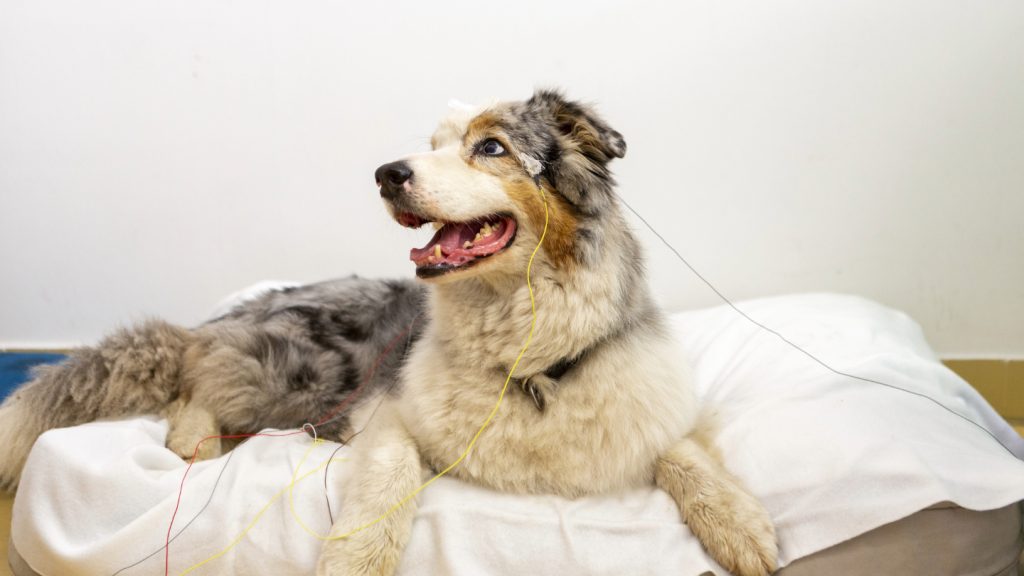Dogs display neural signs of surprise when presented with unexpected toys, suggesting that they can create mental concepts of objects. Research has shown that some dogs have extensive vocabularies, with one famous border collie knowing over a thousand words for toys. However, a study conducted by Marianna Boros and her team focused on dogs in the middle of the pack, investigating their understanding of words and objects. The study involved 27 pet dogs and their owners, who were asked to bring five familiar toys to the lab for the experiment.
The dogs were fitted with electrodes on their heads and were asked to lie on a mat while staying awake. These electrodes monitored brain activity while the dogs listened to recordings of their owners saying the names of various toys. The study involved a setup where the dogs could see their owners through a window, revealing a toy that matched or didn’t match the one named in the audio recording. The researchers found that the dogs exhibited a larger-than-normal signal of surprise when presented with an unexpected toy after hearing the word for a different toy, indicating that the dogs had formed mental expectations based on the verbal cues.
The researchers observed that this neural signal of surprise in the dogs’ brains was similar to the N400 effect in humans, which occurs when something unexpected happens. The findings suggest that dogs have a level of understanding and knowledge of words, as indicated by their reaction to unexpected objects. While previous research has hinted at dogs’ ability to process meaningful words, this study offers new insights into the mental lives of dogs and their comprehension of human language.
Overall, the study highlights the cognitive abilities of dogs and their capacity to understand and respond to verbal cues. The research provides evidence that dogs can create mental concepts of objects based on words, challenging the notion that their reactions are merely reflexive. This suggests that dogs may possess a deeper level of comprehension than previously thought, shedding light on the complexity of their mental processes and cognitive abilities when it comes to language and object recognition.


